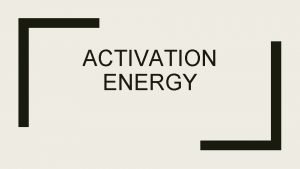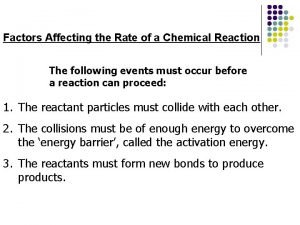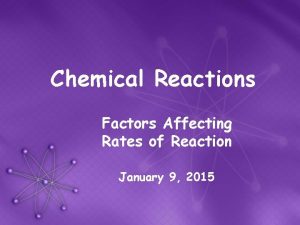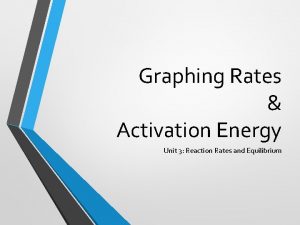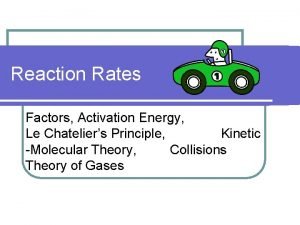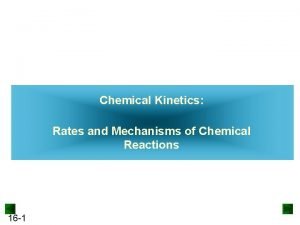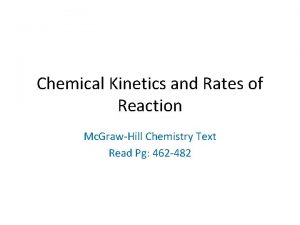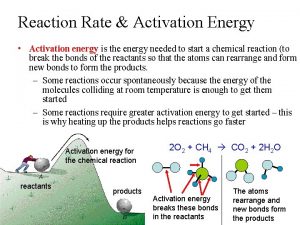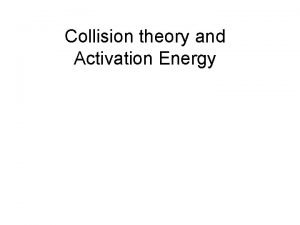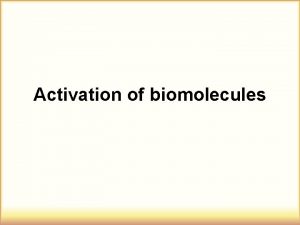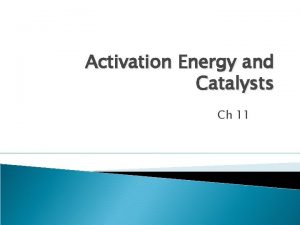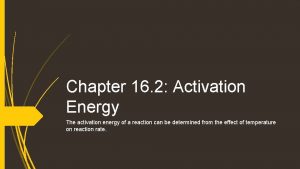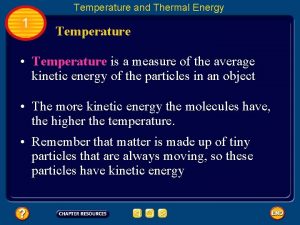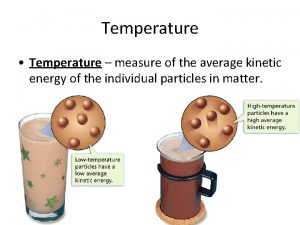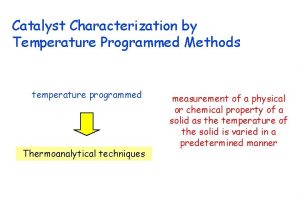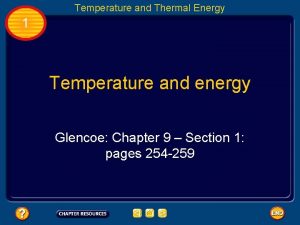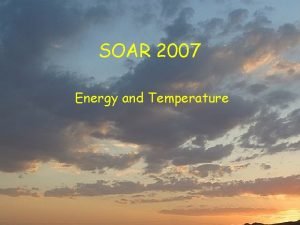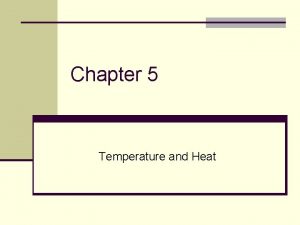Activation Energy and Catalyst Temperature and Rate n
















- Slides: 16

Activation Energy and Catalyst

Temperature and Rate n Generally, as temperature increases, so does the reaction rate. n This is because k is temperature dependent.

The Collision Model n In a chemical reaction, bonds are broken and new bonds are formed. n Molecules can only react if they collide with each other.

The Collision Model Furthermore, molecules must collide with the correct orientation and with enough energy to cause bond breakage and formation.

Activation Energy n In other words, there is a minimum amount of energy required for reaction: the activation energy, Ea. n Just as a ball cannot get over a hill if it does not roll up the hill with enough energy, a reaction cannot occur unless the molecules possess sufficient energy to get over the activation energy barrier.

Reaction Coordinate Diagrams It is helpful to visualize energy changes throughout a process on a reaction coordinate diagram like this one for the rearrangement of methyl isonitrile.

Reaction Coordinate Diagrams n The diagram shows the energy of the reactants and products (and, therefore, E). n The high point on the diagram is the transition state. • The species present at the transition state is called the activated complex. • The energy gap between the reactants and the activated complex is the activation energy barrier.

Maxwell–Boltzmann Distributions n Temperature is defined as a measure of the average kinetic energy of the molecules in a sample. • At any temperature there is a wide distribution of kinetic energies.

Maxwell–Boltzmann Distributions n As the temperature increases, the curve flattens and broadens. n Thus at higher temperatures, a larger population of molecules has higher energy.

Maxwell–Boltzmann Distributions n If the dotted line represents the activation energy, then as the temperature increases, so does the fraction of molecules that can overcome the activation energy barrier. • As a result, the reaction rate increases.

Maxwell–Boltzmann Distributions This fraction of molecules can be found through the expression -E a f = e RT where R is the gas constant and T is the Kelvin temperature.

Arrhenius Equation Svante Arrhenius developed a mathematical relationship between k and Ea: k=Ae -E a RT where A is the frequency factor, a number that represents the likelihood that collisions would occur with the proper orientation for reaction.

Arrhenius Equation Taking the natural logarithm of both sides, the equation becomes ln k = - y = Ea R m ( 1 ) + ln A T x Therefore, if k is determined experimentally at several temperatures, Ea can be calculated 1 from the slope of a plot of ln k vs. T. + b

Catalysts n Catalysts increase the rate of a reaction by decreasing the activation energy of the reaction. n Catalysts change the mechanism by which the process occurs.

Catalysts One way a catalyst can speed up a reaction is by holding the reactants together and helping bonds to break.

Enzymes n Enzymes are catalysts in biological systems. n The substrate fits into the active site of the enzyme much like a key fits into a lock.
 How to calculate activation energy from a graph
How to calculate activation energy from a graph Factors affecting rate of chemical reaction
Factors affecting rate of chemical reaction Activation tree and activation record
Activation tree and activation record What is catalyst and how it affects reaction rate
What is catalyst and how it affects reaction rate Activation energy unit
Activation energy unit Activation energy for reverse reaction
Activation energy for reverse reaction Activation energy
Activation energy Difference between curie temperature and neel temperature
Difference between curie temperature and neel temperature Difference between curie temperature and neel temperature
Difference between curie temperature and neel temperature Difference between curie temperature and neel temperature
Difference between curie temperature and neel temperature Energy energy transfer and general energy analysis
Energy energy transfer and general energy analysis Energy energy transfer and general energy analysis
Energy energy transfer and general energy analysis Rate constant with temperature
Rate constant with temperature Maxwell boltzmann distribution catalyst
Maxwell boltzmann distribution catalyst Adiabatic lapse rate calculator
Adiabatic lapse rate calculator Real vs nominal interest rate
Real vs nominal interest rate Relative growth rate equation
Relative growth rate equation
